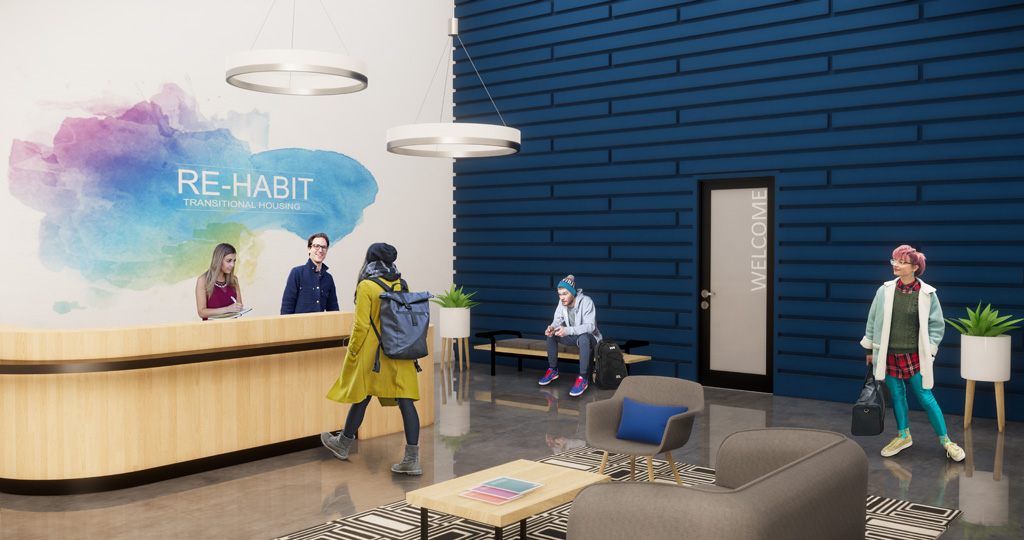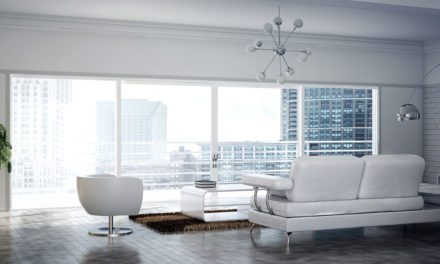Concept converts defunct big-box stores to smaller retail, housing, employment and homeless support
The R&D studio at KTGY Architecture + Planning has conceived Re-Habit, a plan for repurposing obsolete big-box stores into essential uses, including smaller retail spaces, housing, employment, and support for homeless individuals.
“With big box stores such as Macy’s, JC Penney and Sears closing in record numbers, repurposing such vacant spaces becomes increasingly necessary,” said KTGY Senior Designer Marissa Kasdan. “At the same time, the housing affordability crisis and other factors are driving up demand to house and service homeless individuals. Re-Habit offers one adaptive-reuse solution for multiple problems.”
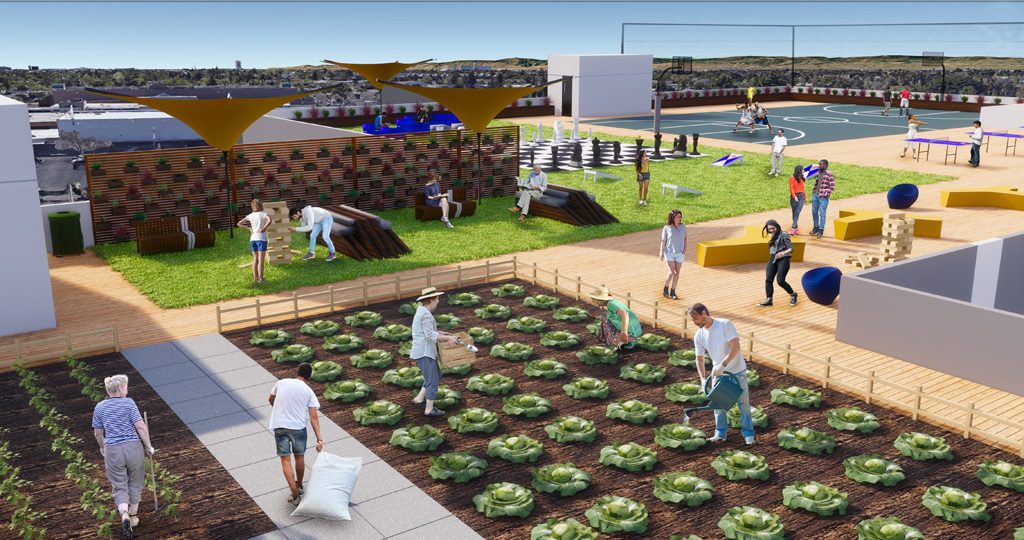
Rooftop Garden – Residents grow fresh ingredients to be used in the residential kitchen and small food shops. Image by KTGY Architecture + Planning
As an example, KTGY proposes a concept for transforming a typical 86,000-square-foot, anchor store. An entry path to the mall is carved out of the mass, and retail spaces in varying square footages front the path to the mall entry. This allows the creation of a courtyard and three sizes of sleeping rooms: 20-bed pod, 12-bed pod, and a 2-bed room. Eight apartment units sit above the retail. Job training, services and recreational programming join the mixed-use program. Added roof space is for recreation and a garden.
Dining Hall
Residents rotate housing chores, like working in the kitchen or keeping the dining hall clean.
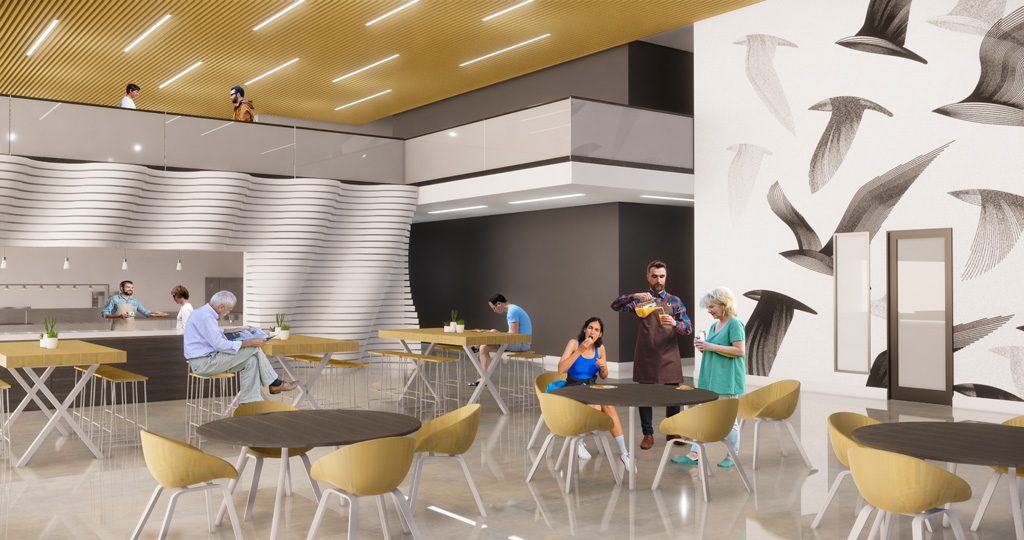
Image by KTGY Architecture + Planning
Bed Pods
There are 4 different types of rooming accommodations, where the residents get an increase in independence and privacy the longer he or she stays in the program.
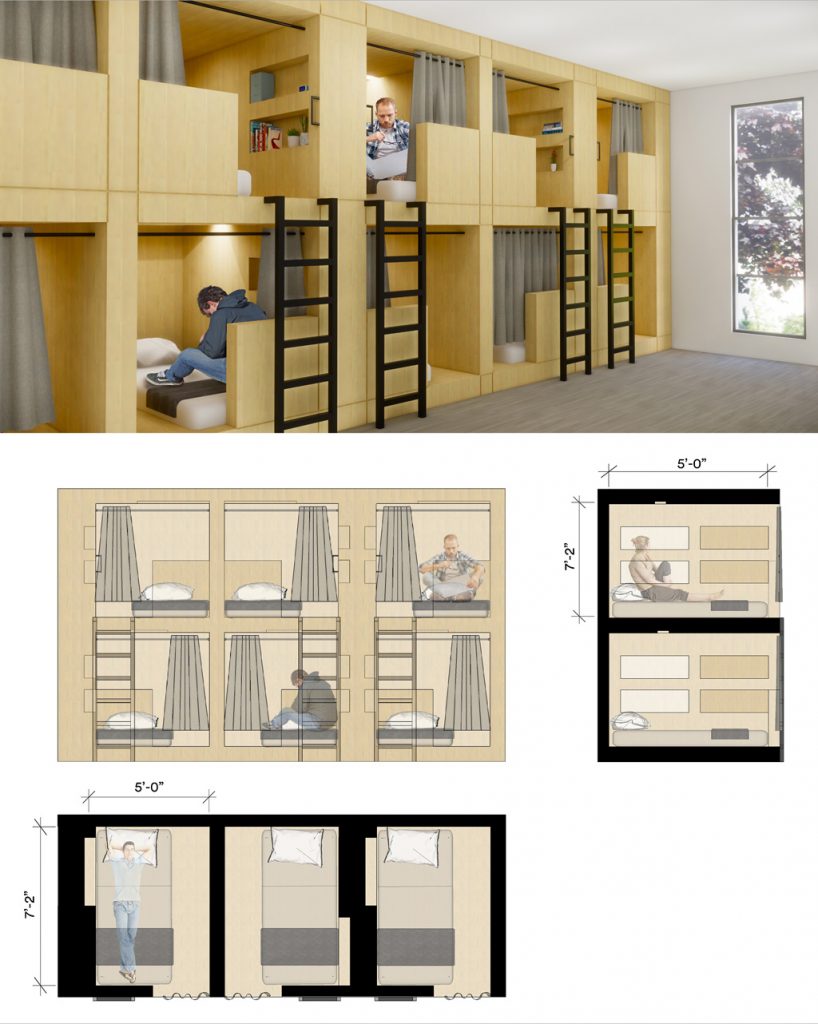
Image by KTGY Architecture + Planning
To achieve these solutions, KTGY’s R&D Studio toured homeless service centers. In extended consultations with Southern California’s Long Beach Rescue Mission, for example, team members evolved the most effective designs and how to integrate such projects with surrounding communities.
“I’m very excited about this idea,” said Long Beach Rescue Mission Executive Director Robert Probst. “Re-Habit, if run correctly, can be a self-contained environment, with people living, working and then moving into affordable housing. It would be a reward for people who are ready to change their lives.”
Probst envisions Re-Habit centers providing employment and self-help programs and “graduating” them into more long-term housing and employment. “Many of them become the best renters and the best employees,” he said.
Potential challenges include cost, location and identifying development partners.
“For most big-box owners, this would not be their first choice for reuse,” said KTGY’s Kasdan. “But on the flip side, many have asked us about new concepts for incorporating residential units into their developments. Re-Habit expands the reuse possibilities and allows everyone to consider communities’ larger needs.”
At the same time, increasing numbers of big-box stores are obsolete, and many developers are open to re-thinking retail anchors and possibly adding unconventional uses, said Kasdan.
“Our retail team has studied potential base sites and many clients are interested in learning more about this concept,” she said.
As Re-Habit is not ground-up construction, it offers certain cost and sustainability benefits. The intention with the Re-Habit concept is to provide a strategic adaptive re-use solution.
“Such a project does not need to appear as a ‘homeless shelter.’ By partnering with the right team of developers, social services, government entities and community groups, it’s possible to create an attractive environment that transforms obsolete space into a real asset.”

